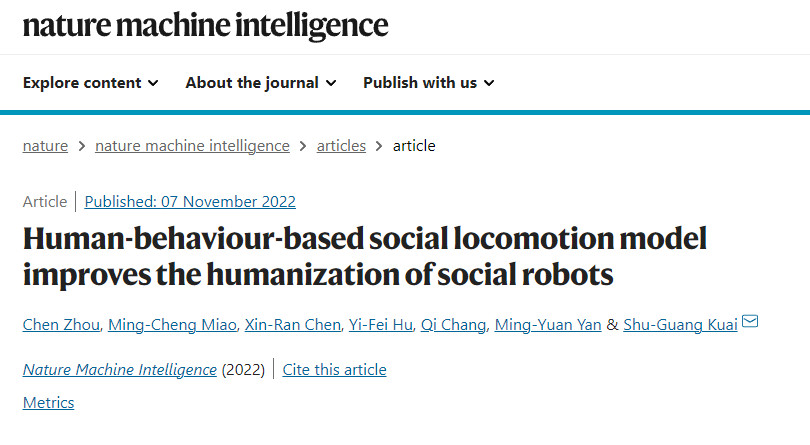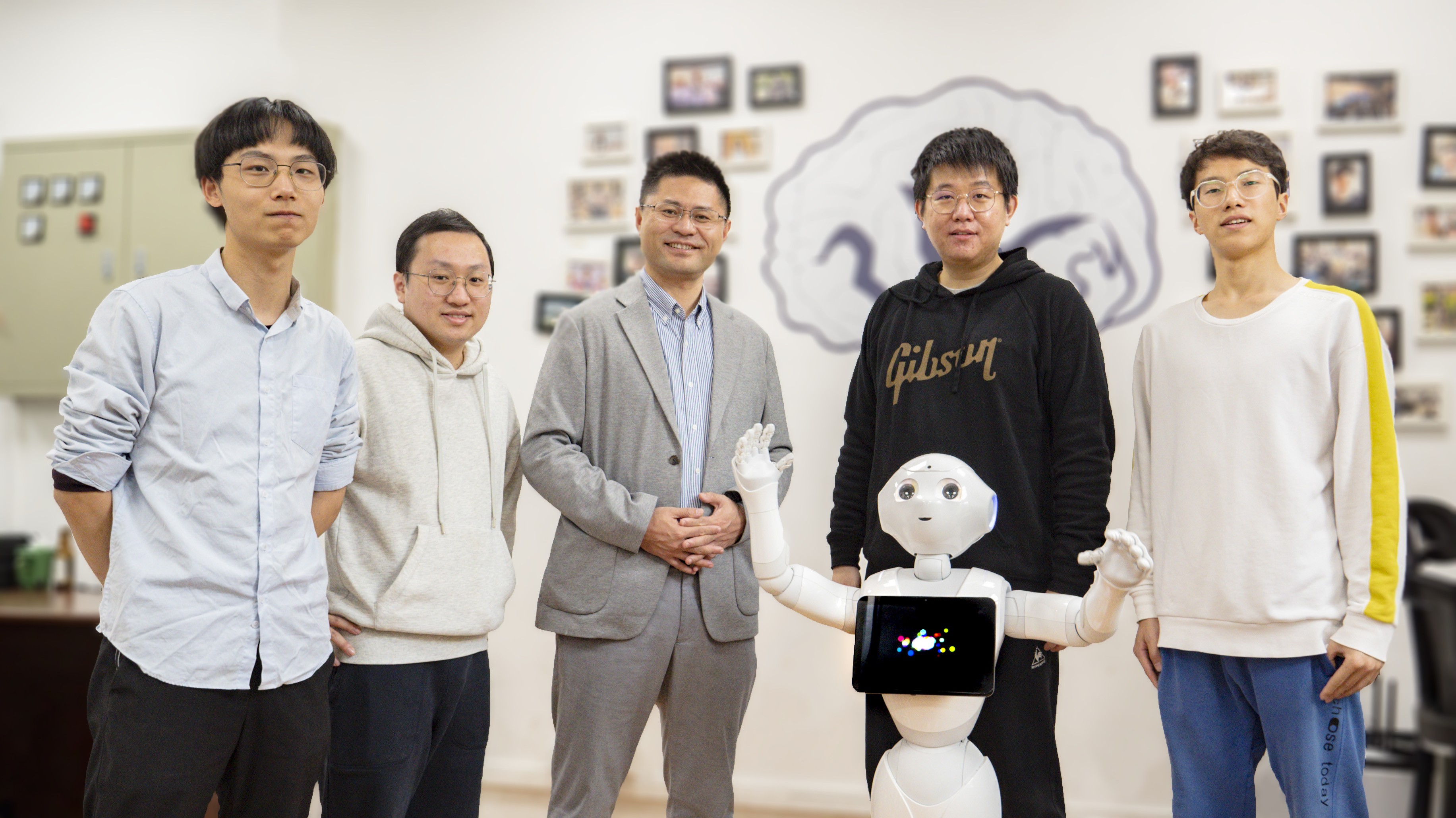Prof. Shu-Guang Kuai and his team from ECNU skillfully quantified human social locomotion by combining virtual reality with computational modelling, and further designed a human-behaviour-based social locomotion model, which significantly improved the humanization of social robots and elevated human-robot interaction experience.
Their work has innovatively shed new light on the robot's integration into social scenarios, connected theories of human social behaviours with navigation algorithms, and thus realized the leap from conceptual definitions to the practical algorithm of human social locomotion. This interdisciplinary scientific research, covering humanities, science and engineering, was recently published inNature Machine Intelligence, one of the world's top-ranking computer science journals.

Human-behaviour-based social locomotion model improves the humanization of social robots | Nature Machine Intelligence
With the advent of the era of artificial intelligence, more and more service robots have entered human life. They are expected to become efficient assistants to human beings.
How to make robots more humanized, able to better understand humans and conduct high-quality social interaction with them, has become a key and difficult problem in the field of service robots. To solve this problem, the theoretical concept of human social interaction behaviour needs to be translated into algorithms that can be directly implanted on the navigation robot's platform.
To address this problem, Prof. Shu-Guang Kuai from the School of Psychology and Cognitive Science, Institute of Brain and Education Innovation, and NYU-ECNU Institute of Brain and Cognitive Science, along with his research team, has successfully constructed an ideal experimental scene for measuring social behaviour using virtual reality technology to effectively quantify and model human social locomotion, and implanted it into the navigation platform of robots after being algorithmized. In doing so, it has realized the three-stage leap from conceptualization, computerization to the engineering of humanities theory.

In particular, this research aims to solve two important scientific and technical issues in this framework: firstly, how to quantify and model human social locomotion, and build a quantitave model to predict human path selections and walking trajectories; secondly, how to translate these models into the engineering algorithm to improve the robot navigation performance.
Regarding the first issue, allthough many theories of special interaction in the fields of psychology, anthropology, sociology and other disciplines have been constructed and developed in history, most of these theories simply describe phenomena and lack a compensative quantitative computational model.

In this context, the research team, utilizing cutting-edge virtual reality technology combined with classical experimental psychology methods, have built an ideal social locomotion experimental scene in a virtual environment to quantify the space of human social interaction and behavioural characteristics of social locomotion. On the basis of the behavioural results, team members have further built a computational model of human locomotion behaviour, thus proposing the Social Locomotion Model based on personal social space. The robustness of this model in complex social scenes has been proved in virtual and real dynamic scenes with multiple persons.
Regarding the second issue, after acquiring the Social Locomotion Model, the research team algorithmized the model based on actual engineering needs, then implanted it in the robot platform for verification and optimization, and tested whether the algorithm based on human intelligence can improve human's evaluation of robots' sociality and humanization.
From various aspects, the study results proved that the human-behaviour-based social locomotion model can effectively improve the experience of human-robot interaction, as well as the humanization and sociality of the robot.
By combining psychological theory and technology with virtual reality, computer science and other fields, Prof. Shu-Guang Kuai has built a multi-disciplinary research team dedicated to quantifying a series of abstract and conceptual theories of humanities with the latest intelligent technologies and inspiring theory-driven breakthroughs in the field of science and technology. In recent years, the research team has designed a series of new research paradigms to achieve the computerization and engineering of humanities theories and relevant results were published in high-profile scientific journals includingNature Human Behaviour,Journal of Neuroscience, andNature Machine Intelligence. It has become a distinctive research team in the field of the interdisciplinary study of humanities and science.
Source: School of Psychology and Cognitive Science
Copy Editor: Philip Nash
Editor: Wicky Xu, Yang Yichen
